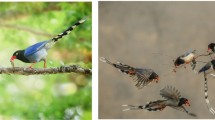Abstract
The principal sex pheromone component of the whitemarked tussock moth (WMTM), Orgyia leucostigma, was recently identified as (Z,Z)-6,9-heneicosadien-11-one (Z6Z9-11-one-21Hy). However, it is thermally unstable and quickly degrades under field conditions so that baited traps are effective for only one night. We have developed a solution to this problem that combines two techniques: (1) the use of a stable pheromone precursor, (Z,Z)-6,9-heneicosadien-11-one ethylene ketal, which is hydrolyzed to the dienone by an acidic aqueous solution (2% p-toluenesulfonic acid in 35% aqueous sorbitol), and (2) use of a small, off-the-shelf, autonomous pump (the Med-e-Cell Infu-disk™) to deliver the precursor continuously to a suitable substrate where it is converted rapidly into the attractive dienone pheromone component. The pump and hydrolysis substrate fit inside sticky traps and because generation and release of pheromone is continuous, the instability of the pheromone is not an issue. In electroantennogram bioassays, dose-dependent responses were obtained with 1 to 1000 ng of hydrolyzed ketal on filter paper, but no response was obtained to 1000 ng of the ketal itself. In wind tunnel bioassays, males were attracted to lures emitting the dienone pheromone component generated from 0.1 to 100 ng of the hydrolyzed ketal. Field tests in 2004 and 2005 showed that sticky traps fitted with the pump delivering the ketal (0.1–1 μg/μL in heptane) at 10 μL/hr to a cotton pad soaked with the hydrolyzing solution were attractive to male WMTM. No moths were caught in controls or traps baited with (Z)-6-heneicosen-11-one. An average of 0.51 moths per trap night was caught over an 18-night period in 2005. The results represent a first step toward developing a sensitive and practical monitoring tool for the WMTM by using a ketal precursor of its unstable dienone pheromone component.





Similar content being viewed by others
References
Beevor, P. S., Hall, D. R., Nesbitt, B., Dyck, V. A., Arida, G., Lippold, P. C., and Oloumi-Sadeghi, H. 1977. Field trials of the synthetic sex pheromones of the striped rice borer, Chilo suppressalis (Walker) (Lepidoptera: Pyralidae), and of related compounds. Bull. Entomol. Res. 67:439–447.
Daterman, G. E., Peterson, L. J., Robbins, R. G., Sower, L. L., Daves, G. D. Jr., and Smith, R. G. 1976. Laboratory and field bioassay of the Douglas-fir tussock moth pheromone, (Z)-6-heneicosen-11-one. Environ. Entomol. 5:1187–1190.
El-Sayed, A. M., Gibb, A. R., Suckling, D. M., Bunn, B., Fielder, S., Comeskey, D., Manning, L. A., Foster, S. P., Morris, B. D., Ando, T., and Mori, K. 2005. Identification of sex pheromone components of the painted apple moth: A tussock moth with a thermally labile pheromone component. J. Chem. Ecol. 31:621–646.
Grant, G. G. 1977. Interspecific pheromone responses of tussock moths and some isolating mechanisms of eastern species. Environ. Entomol. 6:739–742.
Grant, G. G. 1978. Field trials on disruption of pheromone communication of tussock moths. J. Econ. Entomol. 71:453–457.
Grant, G. G., Slessor, K. N., Liu, W., and Abou-Zaid, M. M. 2003. (Z,Z)-6,9-heneicosadien-11-one, labile sex pheromone of the whitemarked tussock moth, Orgyia leucostigma. J. Chem. Ecol. 29:589–601.
Gries, G., Slessor, K. N., Gries, R., Khashkin, G., Priyantha, D. C., Wimalaratne, P. D. C., Gray, T. D., Grant, G. G., Tracey, A. S., and Hulme, M. 1997. (Z)6,(E)8-heneicosadien-11-one: synergistic sex pheromone component of Douglas-fir tussock moth, Orgyia pseudotsugata (McDunnough) (Lepidoptera: Lymantriidae). J. Chem. Ecol. 23:19–34.
Gries, R., Khaskin, G., Clearwater, J., Hasman, D., Schaefer, P. W., Khaskin, E., Miroshnychenko, O., Hosking, G., and Gries, G. 2005. (Z,Z)-6,9-heneicosadien-11-one: major sex pheromone component of painted apple moth, Teia anartoides. J. Chem. Ecol. 31:603–620.
Holsten, E. H., Shea, P. J., and Borys, R. R. 2003. MCH released in a novel pheromone dispenser prevents spruce beetle, Dendroctonus rufipennis (Coleoptera: Scolytidae), attacks in south-central Alaska. J. Econ. Entomol. 96:31–34.
Liu, W. 1999. Semiochemistry of Orgyia and Diatraea lepidopteran species and affinity labeling of 2,3-oxidosqualene cyclase. Ph.D. thesis, Department of Chemistry, Simon Fraser University.
Liu, X., Macaulay, E. D. M., and Pickett, J. A. 1984. Propheromones that release pheromonal carbonyl compounds in light. J. Chem. Ecol. 10:809–822.
Pickett, J. A., Dawson, G. W., Griffiths, D. C., Liu, X., Macaulay, E. D. M., and Woodcock, C. M. 1984. Propheromones: An approach to the slow release of pheromones. Pestic. Sci. 15:261–264.
Streinz, L., Horák, A., VrkoČ, J., and Hrdý, I. 1993. Propheromones derived from codlemone. J. Chem. Ecol. 19:1–9.
Suckling, D. M., Charles, J. G., Allen, D., and Stevens, P. S. 2002. Possibility of control of painted apple moth (Teia anartoides) using single component mating disruption. N. Z. Plant Prot. 55:1–6.
van Frankenhuyzen, K., Ebling, P., Thurston, G., Lucarotti, C., Royama, T., Guscott, R., Georgeson, E., and Silver, J. 2002. Incidence and impact of Entomophaga aulicae (Zygomycetes: Entomophthorales) and a nucleopolyhedrovirus in an outbreak of the whitemarked tussock moth (Lepidoptera: Lymantriidae). Can. Entomol. 134:825–845.
Zar, J. H. 1984. Biostatistical Analysis, 2nd ed. Prentice-Hall, Inc., Englewood Cliffs, New Jersey.
Acknowledgments
The research was supported by the Enhanced Pest Management Methods program, Canadian Forest Service. We thank the National Sciences and Engineering Research Council of Canada for financial support of K.N. Slessor, Henri Maget of Med-e-Cell for helpful discussions on the use of the Infu-disk, and the Insect Rearing Unit at Great Lakes Forestry Centre for the supply of tussock moths. We are grateful to Melanie Coppens for her valuable assistance with the field tests.
Author information
Authors and Affiliations
Corresponding author
Rights and permissions
About this article
Cite this article
Grant, G.G., Liu, W., Slessor, K.N. et al. Sustained Production of the Labile Pheromone Component, (Z,Z)-6,9-Heneicosadien-11-one, from a Stable Precursor for Monitoring the Whitemarked Tussock Moth. J Chem Ecol 32, 1731–1741 (2006). https://doi.org/10.1007/s10886-006-9105-0
Received:
Revised:
Accepted:
Published:
Issue Date:
DOI: https://doi.org/10.1007/s10886-006-9105-0




